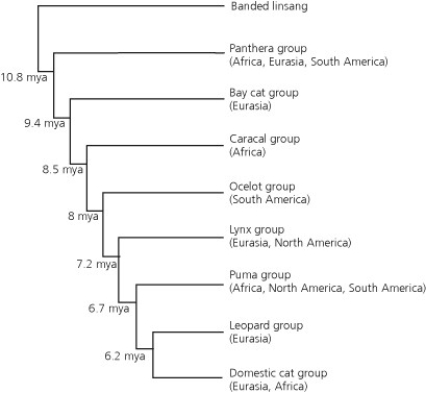Multiple Choice
The family Felidae (cats) is distributed across Africa, Eurasia, North America, and South America and is hypothesized to have eight major lineages (Panthera, bay cat, caracal, ocelot, lynx, puma, leopard, and domestic cat groups) as shown in this phylogenetic tree, constructed from DNA sequences. Scientists used a molecular clock and fossil evidence to date the divergence of each group. The dates of divergence are provided in the accompanying figure.

-Scientists have observed that for several species of smaller Felidae (such as ocelots and wild members of the domestic cat group) , individuals that are kept in zoos become tame, that is, friendly to humans. This behavior is a ________ that may have made domestication of the house cat's ancestor more likely.
A) parsimony
B) clade
C) exaptation
D) molecular clock
Correct Answer:

Verified
Correct Answer:
Verified
Q34: The family Felidae (cats) is distributed across
Q35: A systematist includes a lizard in a
Q36: It is estimated that the modern continents
Q37: One of the strongest lines of evidence
Q38: _ makes it possible to trace phylogenies
Q40: The model of species selection is analogous
Q41: Cave-dwelling catfish and cave-dwelling salamanders share striking
Q42: Which of the following environments is thought
Q43: The family Felidae (cats) is distributed across
Q44: According to the accompanying figure, if a